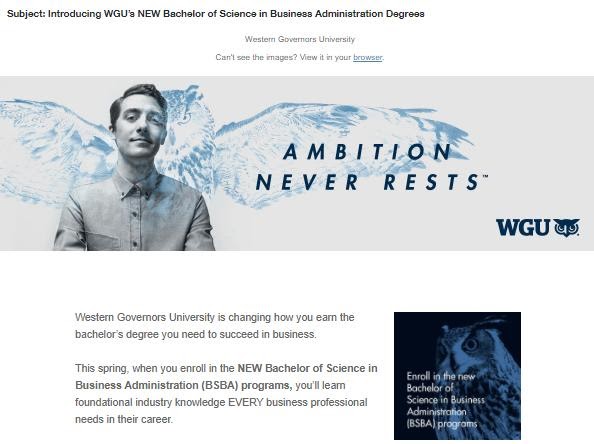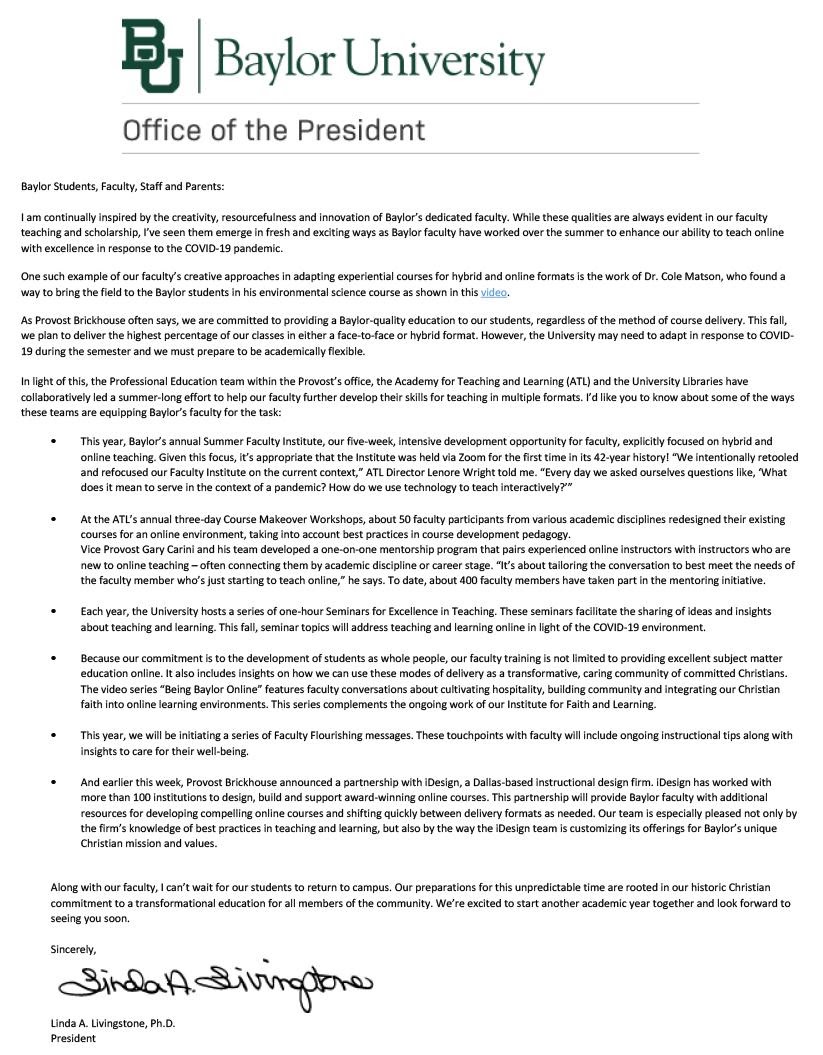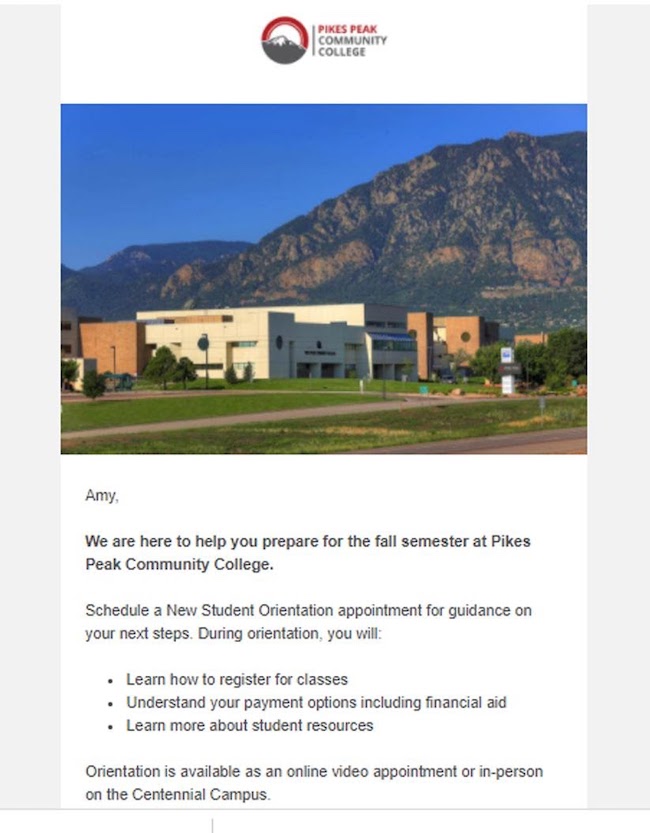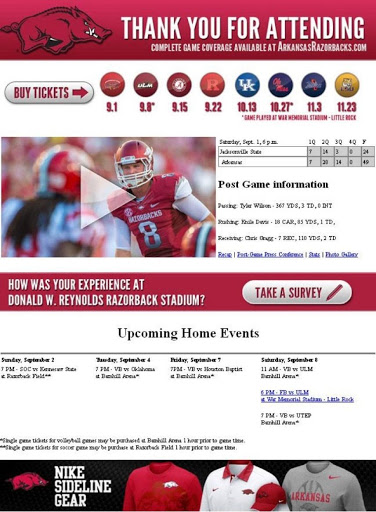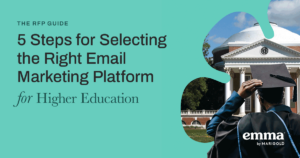6 tactics for successful higher ed email marketing
In light of concerns around the COVID-19 pandemic, U.S. higher education institutions are beginning this school year with remote learning opportunities. In fact, more than 50% of colleges will offer an option for distance learning.
With limited face-to-face interaction in the coming school year, email communication is more vital than ever.
The key to effective communication is a well-strategized email campaign. This not only keeps current students connected to each other but also to the events within the school. It also draws in prospective students and keeps alumni engaged in campus affairs.
Here we’ll explore tactics for successful email marketing that will help deliver results.
Why is email marketing beneficial?
Email marketing is a powerful way to keep people connected. After all, nearly 2.5 billion people across the world use email regularly.
Unlike other platforms, email can reach a large audience with very little investment. Additionally, every email marketing dollar spent brings an average return on investment (ROI) of $44.
Since it’s so targetable, email marketing is highly effective. In fact, when it comes to attracting new prospects, email is nearly 40 times more effective than Facebook and Twitter combined. With email marketing, you can ensure you’re delivering the right message to the right people at the right time.
When designed well, email marketing can boost a university’s enrollment and improve its retention. It offers a way to keep the student body engaged while simultaneously propelling campaigns that drive development. With careful strategy and smart execution, email marketing can be key to the success of your higher ed institution.
Here are 6 tips for successful higher ed email marketing
While many higher ed institutions have email marketing campaigns in place, they lack structure and effectiveness. Luckily, there are some great email marketing software companies available to help overcome these obstacles.
Inconsistent branding, emails that aren’t personalized, and failure to test messages before sending can all lead to poor email marketing results. Follow these tips to develop successful higher ed email marketing campaigns.
1. Write a subject line that answers three key questions
A good open rate for email is anywhere from 15% – 25%. The best way to increase that number is by creating a subject line that answers the following:
-
Who sent the email?
-
What’s this message about?
-
Why did they contact me?
By addressing these ideas, your subject line piques the recipient's interest while explaining the email’s purpose and meaning. Set readers’ expectations with transparency at the start. Let them know what’s in the message. Otherwise, your email could wind up in the trash bin, unopened and unread.
In their email to prospective students interested in seeking a business degree, Western Governors University (WGU) used this effective subject line. It answers the three key questions. It builds interest by mentioning the specific degree the audience is seeking. It also alludes to new opportunities within the field readers might want to pursue.
Subject line: “Introducing WGU’s NEW Bachelor of Science in Business Administration Degree”
Source: Western Governors University
Takeaway: Write targeted subject lines that let readers know who the email is from, what it’s about, and why it’s relevant.
2. Send a message from a leader
In higher ed, it’s easy for students to feel like a number. Consider sending emails to your student body that comes directly from a university leader. When a person of importance takes the time to send a message, it makes the audience feel valued and perceived as an asset to their school. This helps build loyalty and trust.
These messages also give the impression that collegiate leaders are actively involved in what’s happening on campus. They have a vested interest in the school, its constituents, and the success of a positive experience for all.
Baylor University (BU) sends scheduled emails from their president to make people aware of current campus affairs. From enrollment to course delivery to meal plans, her messages give outlined information about what’s taking place behind the scenes. These emails offer transparency and give the audience the impression that she really cares about what’s happening at her campus.
Source: Baylor University
Takeaway: An email from a campus leader gives importance to a message, makes the reader feel valued, and instills a sense of pride in the university.
3. Remember: When writing content, the reader is the star
Develop an effective email marketing campaign by knowing your audience and creating content that relates to them. Your audience ranges from prospective and current students to alumni, parents, and high school counselors. Each segment requires different information. Increase engagement with custom emails for individualized groups. Regardless of your target audience, your message should be all about them and their needs.
Begin by segmenting your subscriber list. Categorize your contacts by interest, demographics, and purpose. This will help you send relevant information to the right people and serve as a benefit to your audience. Once you’ve created your student contact list, consider their journey. Use segmentation to determine what customized message will resonate with them most.
Arizona State University (ASU) sends this message to prospective students. This highly targeted email is aimed at high school students who are preparing for college. It relates to the teenage audience with a light-hearted tone that would appeal to this age group. The email provides helpful information about opportunities to prepare them for the college application process. It even calls for self-care, showing an interest in the reader’s health and wellbeing.
By segmenting their audience and creating custom messaging, ASU is earning trust and increasing the likelihood of bringing in more revenue.
Source: Really Good Emails
Takeaway: Content that’s personalized and focused on the needs of the reader yields positive results. Offer services that benefit your audience. Show interest in their collegiate and personal success. Lay the groundwork for a positive, long-lasting relationship.
4. Use strategically placed photos
Incorporate large, vivid photos in your messages to grab the reader's attention. Even further, place them in the header of your email. Studies show that 42% of college students preview emails before opening them. A strategically placed photo can help increase email open rates. They can also help brand your emails and promote school spirit.
And remember to use alternative text to keep your emails accessible to all.
One of the draws for Pikes Peak Community College is its beautiful scenic view. They incorporate a large photo of the campus in the header of their messaging. Not only is it eye-catching, but it also shows prospective students what they have to look forward to when they arrive on campus. Their photo enhances their text email, but also helps promote their assets.
Source: Pikes Peak Community College
Takeaway: Place eye-catching photos at the top of your email. Not only does this capture readers’ attention, but campus photos also help brand your email and promote school spirit. And of course, make sure to use alternative text as well.
5. Design for multiple devices
Business is no longer conducted strictly from stationary computers. More than 65% of the average college-aged student uses more than one internet-connected device at one time. Students use desktops, tablets, and laptops for a variety of purposes. In fact, 35% of people access email from a mobile device. Design your message so it’s accessible regardless of how readers are receiving their email.
Make sure those eye-catching images we mentioned above are scalable, so they don’t appear distorted. Format all text so that it fits on different screen sizes. You don’t want readers missing out on vital details because characters were limited on their mobile device.
This email from Central College has been optimized for mobile access. Recipients can open this from anywhere and know their donations were received. They’ll also be able to keep up with financial updates regarding their school’s fundraiser.
Source: Central College
Takeaway: Format your emails for mobile applications. Emails that can be accessed from multiple devices increase readership and yield positive results.
6. Add an icon to call-to-action (CTA) buttons
The ultimate goal of any email marketing campaign is to direct readers to your website. The way to do this is through your CTA. Make CTA buttons large and colorful to draw attention. For added success, include a relevant icon to help take the guesswork out of the desired action.
Icons are a great way to give direction at a glance. A shopping cart icon leads people to make a purchase. An arrow icon directs the eye to important information. Icons can help improve CTA click-through rates.
Helzberg Diamonds saw a 26% increase in clicks by adding an arrow to their CTA buttons. If it can work for corporations, it can work for universities.
The University of Arkansas athletics department put a large CTA at the top of their message, just below the main header, where readers were sure to see it. Another is located in the top half of the message, visible as readers scroll up or down. The red letters catch the eye and draw attention to the buttons. The arrow and pencil icons let readers know what action they’re expected to take in each instance.
Source: University of Arkansas
Takeaway: Including an icon in your CTA buttons helps draw attention, give direction, and increase click-through rates.
Wrap up
Email marketing is an important way to maintain personal connections throughout your campus. It’s especially effective when developed with the following tips in mind:
-
Write a subject line that answers three key questions
-
Send a message from a leader
-
Remember: When writing content, the reader is the star
-
Use strategically placed photos
-
Design for multiple devices
-
Add an icon to CTA buttons
By following these best practices, email marketing campaigns can be an impactful way to increase audience engagement, boost brand loyalty, and drive tuition revenue.
We can help your higher ed institution create an email marketing campaign that drives the results you want. Contact us today to get started.
MOST RECENT ARTICLES
Want to engage your audience and grow your brand? Try Emma's robust easy-to-use product today.

